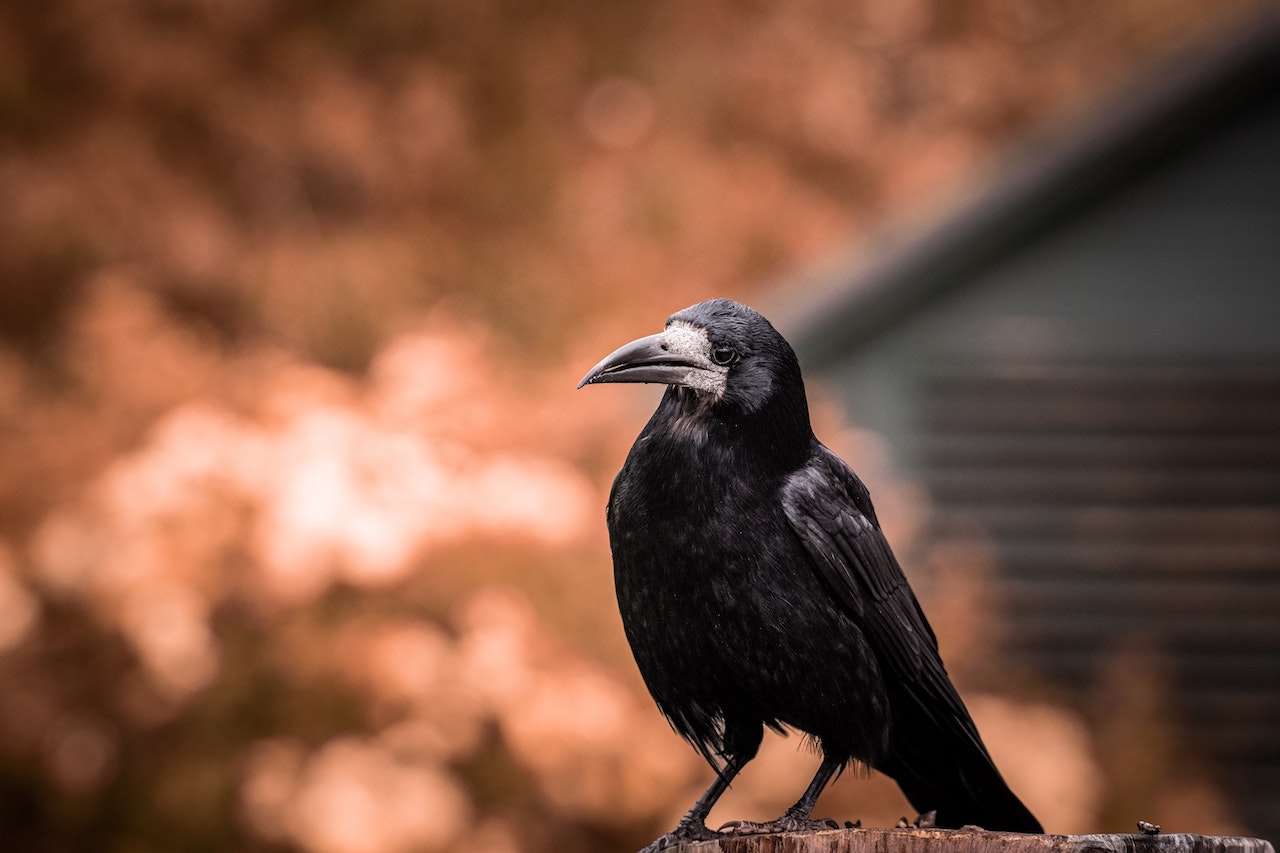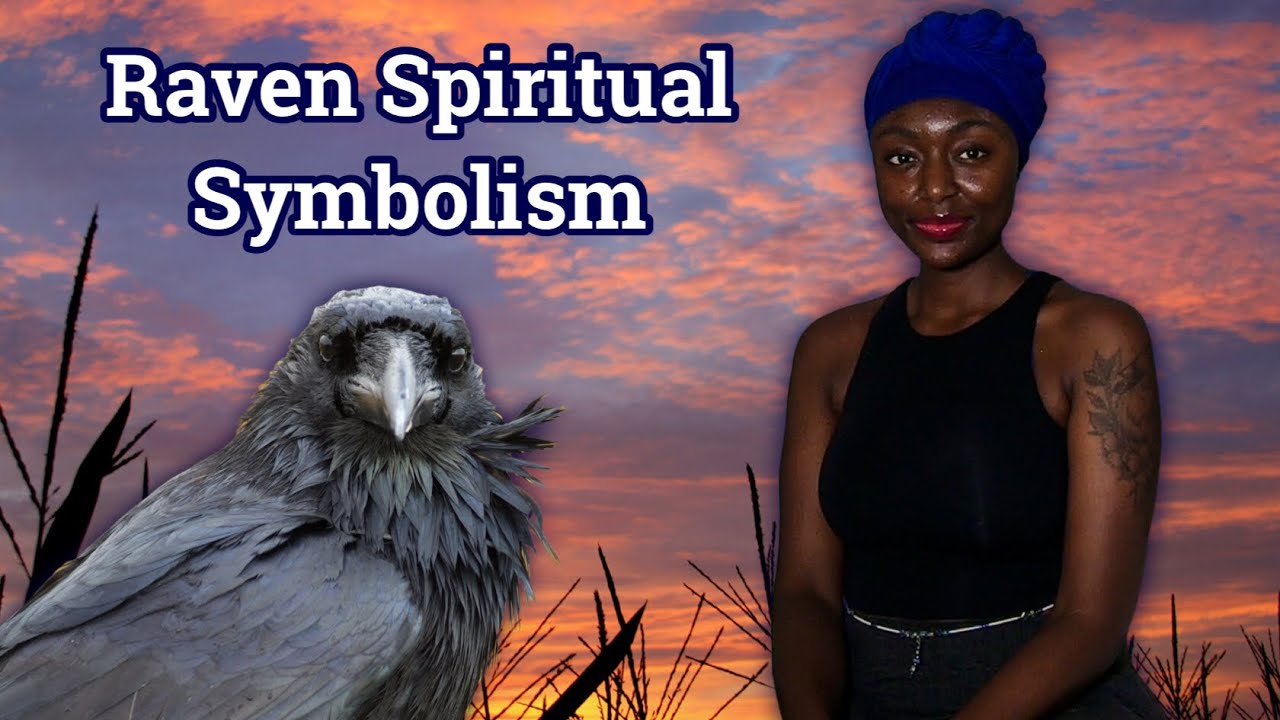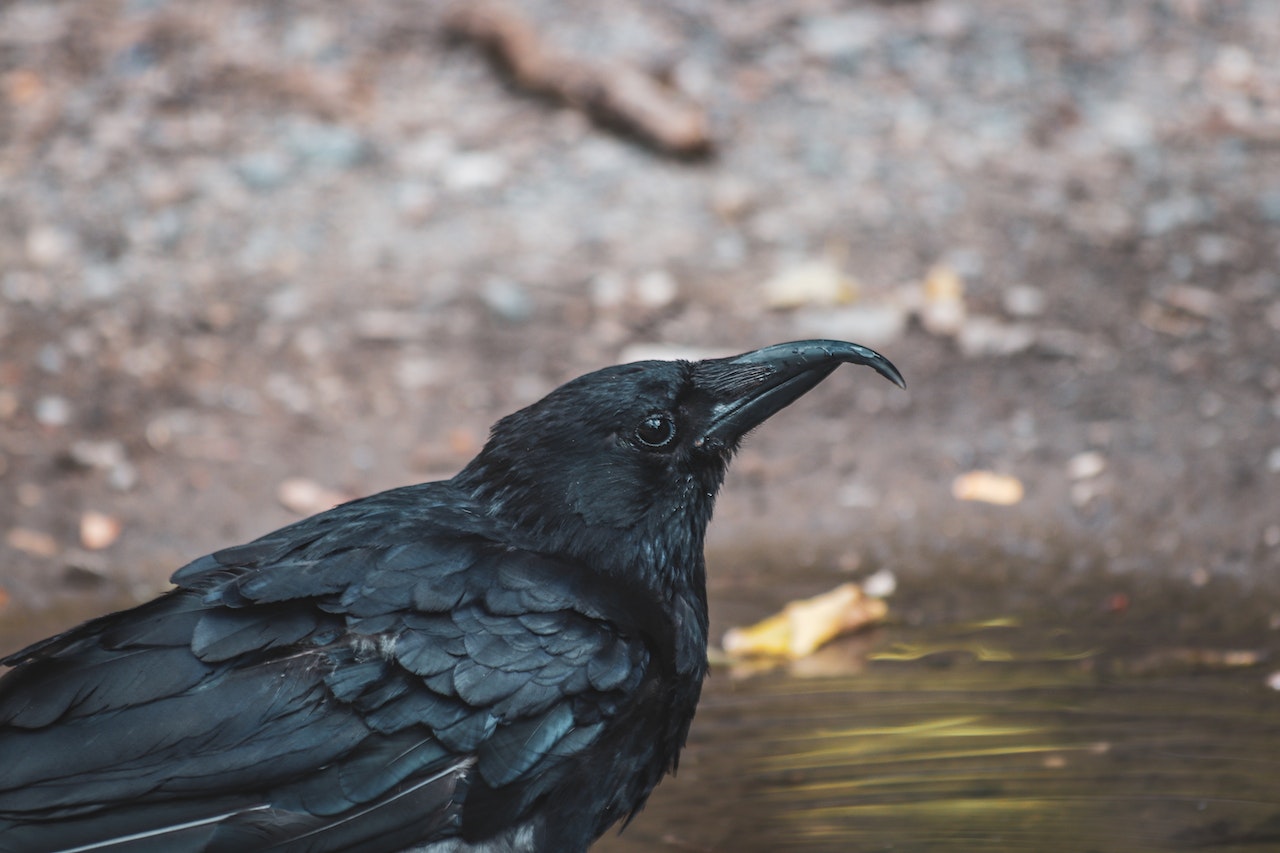What Do Ravens Symbolize - Ravens In Mythology And Religion
What do ravens symbolize? Ravens are often regarded as mysterious and intelligent birds that have been the subject of many myths and legends throughout history. In various cultures, they have been associated with both positive and negative symbolism.
Author:Sonia RavenwoodReviewer:Michele SievertMay 19, 202349 Shares49.2K Views

What do ravens symbolize? Ravens are often regarded as mysterious and intelligent birds that have been the subject of many myths and legends throughout history. In various cultures, they have been associated with both positive and negative symbolism. In this article, we will explore the many meanings and interpretations of the raven symbol.
What Do Ravens Symbolize In Mythology And Folklore?
In many Native American cultures, the raven is depicted as a trickster figure, often playing pranks on humans and causing chaos.
According to legend, the raven was once a white bird, but after stealing the sun and bringing light to the world, its feathers were burnt black.
In some tribes, the raven is seen as a hero who brings light and fire to humans, while in others, it is seen as a mischievous figure who causes trouble.
The Raven As A Messenger Of Death In European Folklore
In European folklore, the raven is often associated with death and the afterlife. In some traditions, it is believed that ravens can sense when someone is about to die and will gather around that person's home or grave.
In other cultures, the raven is seen as a bird that guides the souls of the dead to the afterlife. This symbolism is seen in literature and art, with ravens often depicted as ominous birds that signal the approach of death.
The Raven As A Symbol Of Wisdom In Celtic Mythology
In Celtic mythology, the raven is often associated with wisdom and prophecy. The goddess Morrigan is often depicted as a raven or with a raven by her side, symbolizing her ability to see the future and her connection to the spirit world.
Ravens were also believed to be messengers of the gods, bringing knowledge and wisdom to the people. This symbolism is still seen in modern Celtic-inspired art and designs.
The Raven As A Symbol Of Creation In Pacific Northwest Native American Mythology
In Pacific Northwest Native American mythology, the raven is seen as a creator figure, responsible for bringing the world into existence.
According to legend, the raven stole the sun, moon, and stars from a chief and brought them to Earth, creating light and beauty. The raven is also seen as a trickster figure in this tradition but is revered for its ability to bring about change and creation.
The Raven As A Protector Of The Environment In Inuit Mythology
In Inuit mythology, the raven is seen as a protector of the environment and a provider of food. The raven is said to have created the first humans by shaping them out of clay and breathing life into them.
The raven is also associated with survival and adaptation, as it is a bird that can thrive in harsh Arctic environments. This symbolism is still seen in Inuit art and storytelling today.
Raven Symbolism In Literature And Pop Culture
Perhaps the most famous example of raven symbolism in literature is in Edgar Allan Poe's poem "The Raven." In this poem, a raven visits the narrator in the middle of the night and repeatedly utters the word "nevermore," driving the narrator to despair.
The raven is often interpreted as a symbol of death and the narrator's descent into madness, but it can also be seen as a symbol of the narrator's inability to move on from the loss of his loved one.
The Raven In Game Of Thrones
In the popular television series Game of Thrones, ravens play an important role as messengers, carrying newsand information across the fictional world of Westeros.
The three-eyed raven, a mystical figure who appears in the dreamsof certain characters, is also a significant symbol throughout the series.
The raven's intelligence and ability to communicate make it a fitting symbol for the complex web of politics and intrigue in the show.
The Raven In Native American Literature
Ravens feature prominently in many works of Native American literature, from traditional legends to contemporary novels. In Louise Erdrich's novel "The Round House," for example, a raven is a recurring symbol of both death and transformation.
In Leslie Marmon Silko's "Ceremony," the raven is a symbol of the storyteller's connection to the past and his role as a mediator between the spiritual and physical worlds.
The Raven In Music
Ravens are also a popular symbol in music, with many artists incorporating the bird into their lyrics and imagery. The British rock band Led Zeppelin, for example, has a song called "The Battle of Evermore" that includes the lyric "The raven's call, strikes the hour." In the song "Blackbird" by The Beatles, the blackbird is seen as a symbol of hope and freedom, but the raven is also referenced as a darker, more ominous bird.
The Raven In Film
The raven has also made appearances in various films, often as a symbol of mystery and darkness. In the horror classic "The Raven" (1963), the raven is a key part of the story, serving as a link between the film's themes of madness, death, and revenge.
In the animated film "Maleficent" (2014), a raven named Diaval serves as the title character's loyal companion and transforms into various animals to aid her in her quests.

Raven Spirit Animal Totem | Coming Face to Face with Your Shadow Self
Raven Symbolism In Spirituality And Religion
In spiritualityand religion, ravens have been associated with divinationand magic. In some Native American cultures, the raven is considered a messenger between the spirit world and the human world.
In Norse mythology, the god Odin is said to have two ravens that fly around the world to bring him information. In Christianity, the raven is mentioned in the Bible as the bird that Noah sent out from the ark to see if the waters had receded.
The Raven In Norse Mythology
In Norse mythology, Odin, the god of wisdom and war, had two ravens named Huginn and Muninn (meaning "thought" and "memory" respectively) who flew around the world and brought back information to him.
The ravens were seen as symbols of Odin's wisdom and knowledge and were often depicted perched on his shoulders. The raven was also associated with the god of the underworld, Hades.
The Raven In Native American Spirituality
In many Native American cultures, the raven is considered a powerful spiritual symbol. It is often seen as a messenger between the physical and spiritual worlds, and a symbol of transformation and change.
In some tribes, the raven is also seen as a trickster figure, representing both the chaotic and creative forces of the universe.
The Raven In Christianity
In Christianity, the raven is mentioned several times in the Bible. In the story of Noah's ark, a raven was sent out to search for land but did not return, leading Noah to believe that it had found somewhere to land.
The raven is also mentioned in the book of Proverbs, where it is described as a bird that does not provide for its young. In both cases, the raven is seen as a symbol of resourcefulness and self-reliance.
The Raven In Wicca And Paganism
In Wicca and other pagan religions, the raven is often associated with the goddess Morrigan, who is seen as a guardian of the dead and a symbol of both destruction and rebirth. The raven is also seen as a symbol of transformation and change, as well as intelligence and cunning.
The Raven In Hinduism
In Hinduism, the raven is often associated with the god Shani, who is the god of karma and justice. The raven is seen as a symbol of both wisdom and misfortune and is sometimes depicted as carrying a message from the gods to the mortal world.
Raven Symbolism In Nature
In nature, ravens are known for their intelligence and adaptability. They are often regarded as a symbol of freedom and the wild, as they are birds that are not often domesticated.
In some cultures, ravens are considered protectors of the environment, as they are scavengers that help keep the ecosystem in balance.
Raven As A Keystone Species
In ecology, a keystone species is a species that plays a crucial role in maintaining the balance of an ecosystem.
Ravens are considered to be keystone species in many ecosystems, as they play an important role in controlling populations of other animals.
They are scavengers that feed on carrion and other organic matter, helping to prevent the spread of disease by removing dead animals from the environment.
Additionally, ravens may also help to control populations of smaller animals such as rodents, which can have a significant impact on plant growth and other ecological processes.
Raven As An Indicator Species
Indicator species are species that can be used to assess the health of an ecosystem, as they are sensitive to changes in their environment.
Ravens are often used as indicator species in conservation biology, as they are highly adaptable and can be found in a wide range of habitats.
Changes in raven populations can be an early warning sign of changes in the health of an ecosystem, making them an important species to monitor.
Raven As A Symbol Of Adaptability
Ravens are known for their intelligence and adaptability, which has made them one of the most successful bird species in the world.
They are able to thrive in a wide range of habitats, from deserts to forests to urban areas. As a result, they are often seen as a symbol of adaptability and resilience in nature.
Raven As A Symbol Of Mystery And Magic
In many cultures, the raven is seen as a mystical and mysterious bird. It's dark color and eerie call have led to its association with magic and the supernatural.
In Native American mythology, the raven is often seen as a trickster figure, using its intelligence and cunning to outsmart others. In Norse mythology, the raven is associated with Odin, the god of wisdom and magic.
The raven's mysterious nature has also made it a popular symbol in literature and pop culture, where it is often used to represent the unknown and the supernatural.
Raven As A Threatened Species
Despite their adaptability and resilience, ravens are facing threats from habitat loss, climate change, and persecution by humans. In some areas, ravens are seen as pests and are actively hunted or poisoned.
Additionally, changes in climate and habitat may have a significant impact on raven populations, particularly in areas where their natural habitat is threatened.
As a result, conservation efforts are needed to protect ravens and ensure that they continue to play their important role in ecosystems around the world.
People Also Ask
What Do Ravens Symbolize In Native American Totemism?
In Native American totemism, ravens are seen as guides, protectors, and symbols of change and transformation.
What Do Ravens Symbolize In Ancient Greek Mythology?
In ancient Greek mythology, the raven is associated with the god Apollo and is seen as a symbol of prophecy and wisdom.
What Do Ravens Symbolize In Hinduism?
In Hinduism, the raven is associated with the god Shani and is seen as a symbol of patience, intelligence, and hard work.
What Do Ravens Symbolize In Japanese Folklore?
In Japanese folklore, the raven is associated with the sun goddess Amaterasu and is seen as a messenger of the gods and a symbol of good fortune.
What Do Ravens Symbolize In Modern Popular Culture?
In modern popular culture, ravens are often associated with death, mystery, and the occult, appearing in everything from horror movies to heavy metal album covers.
Conclusion
Ravens have been a subject of fascination and intrigue for humans throughout history, and their symbolism has been interpreted in a multitude of ways across cultures and contexts.
Whether seen as messengers of the gods, tricksters, or symbols of transformation, the raven's intelligence, adaptability, and mystery have made it a powerful symbol in mythology, literature, and popular culture.
The question of "what doravens symbolize" is one that is unlikely to be answered definitively, as their symbolic meaning is constantly evolving and adapting to the changing beliefs and values of human society.
However, the enduring fascination with the raven ensures that it will continue to inspire creativity and thought-provoking discussions for generations to come.

Sonia Ravenwood
Author
Sonia Ravenwood is an accomplished writer with a profound passion for exploring spirituality, magical practices, and the significance of numbers.
She has published numerous works exploring spiritual growth, magical practices, and the significance of numbers on reputable platforms.
Her insightful content reflects her expertise and dedication, making complex concepts accessible and engaging for readers.
Prior to focusing on writing, Sonia held various roles in content creation and marketing, honing her skills in communication and storytelling.

Michele Sievert
Reviewer
Michele Sievert is a seasoned expert in astrology and spirituality, boasting over 10 years of experience in these transformative fields. She holds a Bachelor's degree in Astrology from the International Academy of Astrology, showcasing her dedication and expertise in the mystical arts.
Michele's insightful guidance has positively impacted numerous individuals, helping them navigate life's complexities with clarity and purpose. Her deep understanding and engaging style make her writings a trusted resource for those seeking spiritual enlightenment.
In her leisure time, she enjoys spending moments of tranquility with loved ones, fostering a balanced and fulfilling life.
Latest Articles
Popular Articles
